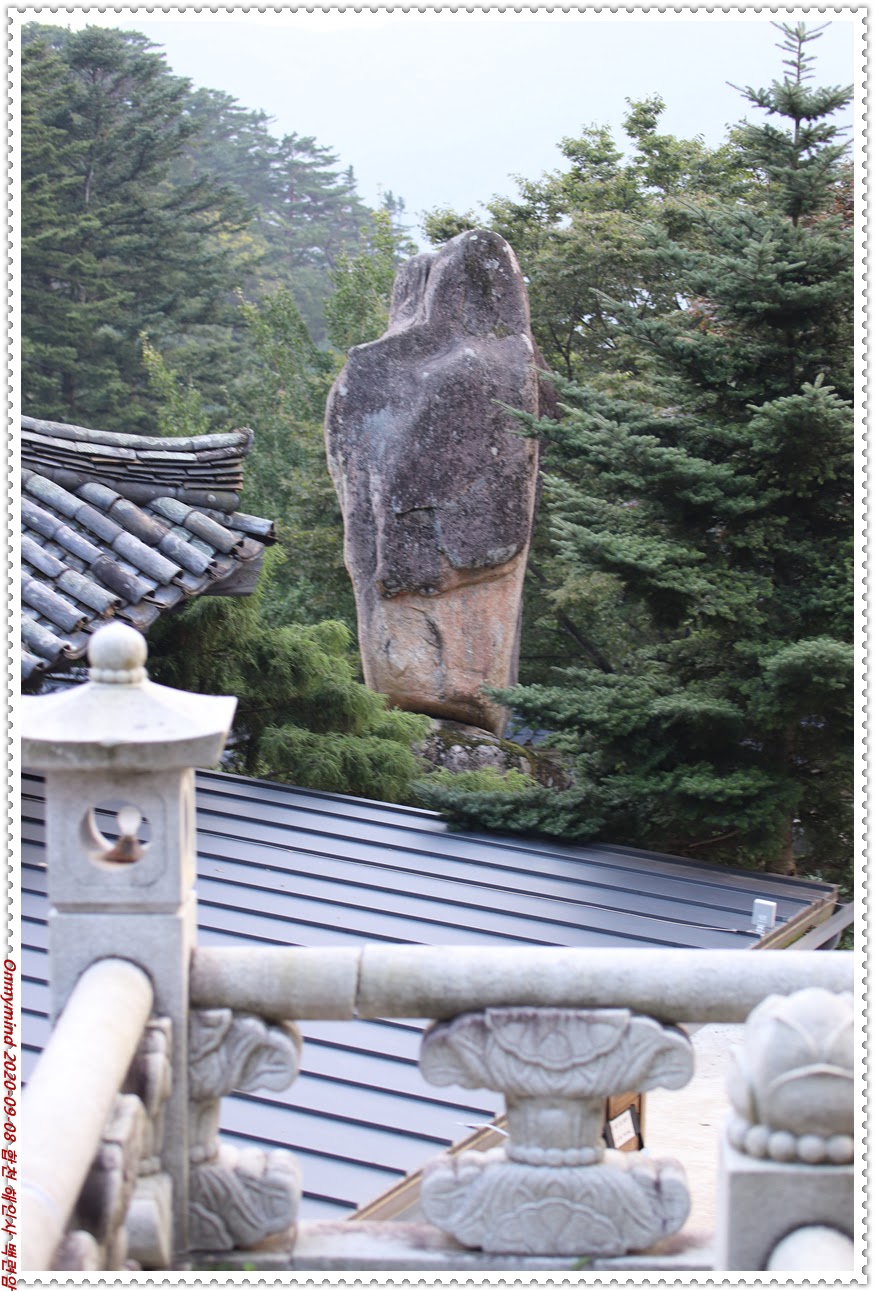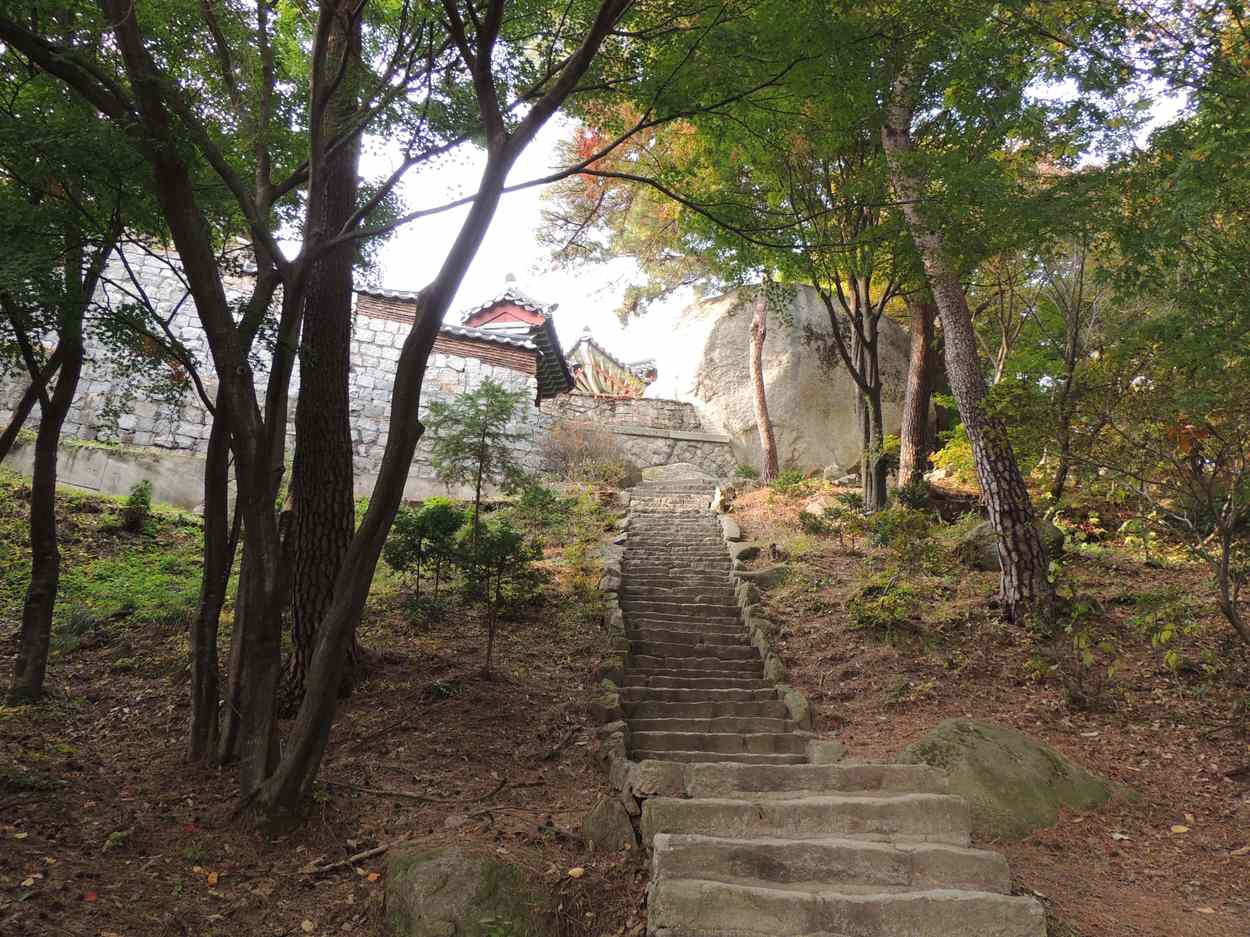대반열반경-k0652-003
『대반열반경』
K0652
T0007
대반열반경 하권/전체3권
● 한글대장경 해당부분 열람I
● 한글대장경 해당부분 열람II
○ 통합대장경 사이트 안내
○ 해제[있는경우]
● TTS 음성듣기 안내
※ 이하 부분은 위 대장경 부분에 대해
참조자료를 붙여 자유롭게 연구하는 내용을 적는 공간입니다.
대장경 열람은 위 부분을 참조해주십시오.
● 자료출처 불교학술원 기금 후원안내페이지
불기2569-07-15 -- 뽑혀진 대장경 내용 연구
내용 이해가 쉽도록 위 사이트 원 번역문 내용을 단문형태로 끊어 표현을 바꿔 기재한다.
다만, 여건상 일부분만 살피는 경우가 많다.
따라서 작업중 파일을 별도로 만든다.
그리고 클라우드 드라이브 폴더에 보관한다.
그리고 이후 계속 수정보완해가기로 한다.
그리고 완료되면 본 페이지에 직접 붙여나가기로 한다.
작업중인 파일은 다음 폴더 안에서 K0652_T0007_in 파일을 참조하면 된다.
https://drive.google.com
●차후 링크가 변경되어 연결되지 않을 때는 다음 페이지 안내를 참조한다.
buddhism0077
『대반열반경』
♣0652-003♧
♥아래는 현재 작성 및 정리 중인 미완성 상태의 글입니다♥
[페이지 내용 업데이트 관련 안내]
❋본문
◎[개별논의]
○ [pt op tr]

○2019_1105_110319_canon_exc_s12▾순천 조계산 선암사

○2019_1105_130939_canon_exc▾순천 조계산 선암사

○2019_1201_165851_canon_exc_s12▾원주 구룡사

○2020_0908_162953_nikon_ori_rs▾합천 해인사

○2020_0908_170659_canon_ori_rs▾합천 해인사 백련암

○2020_0910_111849_canon_ori_rs▾속리산 법주사

○2018_1022_173215_canon_exc▾공주 태화산 마곡사

○2018_1023_155643_nikon_exc▾예산 덕숭산 수덕사

○2015_1025_133643_nikon_exc_%23021▾서울_조계사

○2015_0423_160559_nikon_exc_

○2016_0123_192236_nikon_exc▾부안_능가산_내소사

○2021_1002_181339_nikon_exc▾경주_함월산_골굴사

○2021_0217_133454_nikon_exc▾서산_상왕산_개심사

○2021_0215_114753_canon_exc_s12▾용인_연화산_와우정사

○2021_1002_134305_nikon_exc▾영천_팔공산_거조사

○2016_0505_132801_nikon_exc▾춘천_오봉산_청평사

○2021_1004_172704_canon_exc▾하동_고성산_약천사

○2024_0224_124019_nikon_exc_s12▾천마산_보광사
● [pt op tr] fr

○2019_1201_143655_canon_exc▾원주 구룡사
❋❋본문 ♥ ◎[개별논의]
★%★
『대반열반경』 ♣0652-003♧
대반열반경 해제 (있는 경우)
대반열반경 003권 요점 핵심
◎◎[개별논의] ♥ ❋본문
★1★
◆vnkh1834
| ◈Lab value 202402241240 |
|
○ [pt op tr] 예술작품 사진 공양, 나무불, 나무법, 나무승 Katsushika-Hokusai-falcon-in-flight
Author steve46814
♥단상♥ |
|
문서정보 ori https://buddhism0077.blogspot.com/2025/07/k0652-003.html#1834 sfed--대반열반경_K0652_T0007.txt ☞대반열반경 하권/전체3권 sfd8--불교단상_2569_07.txt ☞◆vnkh1834 불기2569-07-15 θθ |
■ 퀴즈
대반열반경_003
『기신론』의 말. 직심(直心)ㆍ심심(深心)ㆍ대비심(大悲心). 신성취발심(信成就發心)의 내용을 나눈 것.
답 후보
● 삼심(三心)
삼율의(三律儀)
삼장(三藏)
삼제원융(三諦圓融)
삼종세간(三種世間)
삼종회향(三種廻向)
삼천대천세계(三千大天世界)
ॐ मणि पद्मे हूँ
○ [pt op tr]
■ 음악
Pierre Bachelet - Un Amis Qui S'en Va
Sacha Distel - Ce Serait Dommage
Georges Moustaki - Lettre A Marianne
Daniel Darc - Nijinsky
Edith Piaf - La Vie En Rose, Rencontre Avec Henri Contet
Patrick Bruel - On T'attendait (Live)
Mireille Mathieu - Donna Senza Eta
■ 시사, 퀴즈, 유머
뉴스
퀴즈
퀴즈2
유머
■ 한자 파자 넌센스 퀴즈
040▲ 卯卬戊民半 ■ 묘앙무민반 40 ( 토끼 묘 /넷째 지지 묘 )( 나, 자신( 自身) 앙 / 위풍당당( 威風堂堂)한 모양 앙) ( 다섯째)천간( 天干) 무 / 무성하다( 茂盛--) 무 )( 백성 민 / 잠잘 면 )( 반 반 )
001▲ 丨亅丿乙乚 ■ 곤궐별을을 1 [ 자유롭게 시로 감상한 내용~~~] ( 뚫을 곤 )( 갈고리 궐 )( 삐침 별 )( 새 을/ 둘째 천간( 天干) 을 ) ( 숨을 을 ) 재춘법한자
【 】 ⇄✙➠
일본어글자-발음
중국어글자-발음
■ 영어단어 넌센스퀴즈- 예문 자신상황에 맞게 바꿔 짧은글짓기
■ 번역퀴즈
번역
번역연습(기계적 번역내용 오류수정 연습)
■ 영-중-일-범-팔-불어 관련-퀴즈
[wiki-bud] Sunita
[san-chn] dīpa-prabhā 燈明
[san-eng] tvaramāṇāḥ $ 범어 ruśing
[pali-chn] abyāpāra 無經營
[pal-eng] akkhikuupa $ 팔리어 m.socket of the eye.
[Eng-Ch-Eng] 五陰 The five skandhas, or five aggregates, which S/a^kyamuni taught as the factors which comprise the composite we call "sentient being." This is an earlier translation of the Sanskrit pan~ca-skandh!a^h, the later translation being 五蘊. See that compound for full explanation.
[Muller-jpn-Eng] 平等大慧 ビョウトウダイエ great universal wisdom
[Glossary_of_Buddhism-Eng] EXPEDIENT MEANS☞
Syn: Expedients; Skillful Means; Skill-in-means; Upaya.
See also: Paramita; Practice.
A. “Temporary or provisional teachings as a means to lead sentient
beings to the final doctrine.
B. The seventh of the ten Paramitas (q.v.).”
Dait: 118
Refers to strategies, methods, devices targeted to the capacities, circumstances, likes and dislikes of each sentient being, so as to rescue
him and lead him to Enlightenment. “All particular formulations
of the Teaching are just provisional expedients to communicate the
Truth (Dharma) in specific contexts” (J. C. Cleary).
“The Buddha’s words were medicines for a given sickness at a given
time,” always infinitely adaptable to the conditions of the audience.
Editor / Van Hien: 221-222
“The practice of skillful means is the Buddhist approach to teaching
the Dharma. Each method (Pure Land, Zen …) ‘has its own area of
emphasis. Those who advocate a Dharma door direct all expedient
teaching toward that method.’ ”
(Master Thích Thiền Tâm, Buddhism of Wisdom & Faith, Preface.)
I. Unfavorable expedients
An expedient which at first sight seems adverse but which in fact
serves to awaken the practitioner to the Truth, for example, of
Impermanence. See the following passage from a Zen text, the
Vimalakirti Sutra:
“They [Bodhisattvas] demonstrate the burning of the earth / In the
consuming flames of the world’s end, / In order to demonstrate impermanence/ To living beings with the notion of permanence… They
play with illusory manifestations / In order to develop living beings, /
showing themselves to be old or sick,/ And even manifesting their
own deaths.”(Robert Thurman, tr.)
A severe illness, a sudden death or even loss of a job may sometimes
jolt the practitioner out of his usual complacency and remind him of
the need to cultivate. Note: whether an unfavorable event is good or
bad for one’s cultivation depends, in the final analysis, on one’s own
outlook, one’s mind. It can be either an expedient, to help one attain
the Way or a “demon,” hindering cultivation (see also Buddhism of
Wisdom & Faith, sect. 63, para. 4).
Feigning shortcomings and weaknesses is a common expedient of
leading disciples of Sakyamuni Buddha. For example, Ananda was
allegedly “lured” into the house of the most beautiful courtesan of
Vaisali, thus providing the setting for the Surangama Sutra. In this
key Mahayana text, the Buddha warned cultivators of the various
temptations and obstructions to be expected on the way to Enlightenment. Following this example, some monks and nuns at times
expediently confess to various transgressions they did not actually
commit. This is for the express purpose of providing the assembly
with an opportunity to learn and grow. These instances, albeit rare,
reflect the essence of Bodhisattva practice.
II. One / Many Teachings
See also the following passage from D. T. Suzuki:
“Buddhist theology has a fine comprehensive theory to explain the
manifold types of experience in Buddhism, which look so contradictory to each other. In fact the history of Chinese Buddhism is a
series of attempts to reconcile the diverse schools … Various ways of
classification and reconciliation were offered, and … their conclusion
was this: Buddhism supplies us with so many gates to enter into the
truth because of such a variety of human characters and temperaments and environments due to diversities of karma. This is plainly
depicted and taught by the Buddha himself when he says that the
same water drunk by the cow and the cobra turns in one case into
nourishing milk and in the other into deadly poison, and that medicine is to be given according to disease. This is called the doctrine of
[skillful] means …” (The Eastern Buddhist, Vol. 4, No. 2, p.121.)
A question that arises is how two methods seemingly so opposite as
Pure Land and Zen can lead to the same goal of Buddhahood. As an
analogy, supposing a patient is admitted to the hospital with a high
fever. The physician will, of course, prescribe a medication to lower
the fever. However, if later in the day, her temperature has dropped
to a dangerously low level, he will attempt to raise it with another
prescription. The immediate goal is different in each case, but the
ultimate goal in both is the same: to normalize the temperature of
the patient. The Buddha, as the master physician, likewise employs
84,000 methods to treat the 84,000 afflictions of sentient beings.”
“Studying Zen, Buddha Recitation, even reading and reciting sutras,
all are aids in the path toward seeing the Way. They are like the staves
that travelers use to aid them in their journeys. (Zen Master Hakuin
1685-1768).”
Another interpretation is that the teachings themselves are not simplified, but rather the audience was not ready to understand them to the
full extent. As an analogy, the rain may fall equally on big trees and
small but the larger ones absorb more water.
Even when the Buddhas and Bodhisattvas are depicted as providing material assistance to the believer, this is always viewed as
an “expedient means” – the ultimate goal is to lead the believer to
Enlightenment.
III. Self-Benefit / Other-Benefit
See the following explanation of the expression “skillful means are
the ultimate” as seen by Kukai (774-835), the founder of the Japanese
Shingon, or Esoteric, school:
“Kukai interpreted this phrase in two ways. One stresses the imperative
sense that skillful means should lead to ultimate enlightenment. The
other emphasizes the declarative sense that skillful means themselves
are the ultimate. The former expresses the view of self-benefit in seeking enlightenment, and the latter, the view of enlightenment fulfilled
in compassion toward others.”
IV. Note:
The Treatise on the Awakening of the Faith specifically recommends
Buddha Recitation for all but the most advanced practitioners: “Next,
suppose there is a man who learns this [Mahayana] teaching for the
first time and wishes to seek the correct faith but lacks courage and
strength. Because he lives in this world of suffering, he fears that he
will not always be able to meet the Buddhas and honor them personally, and that, faith being difficult to perfect, he will be inclined to
fall back. He should know that the Tathagathas have an excellent
expedient means by which they can protect his faith: that is, through
the strength of wholehearted meditation-recitation on the Buddha,
he will in fulfillment of his wishes be able to be born in the Buddhaland beyond, to see the Buddha always, and to be forever separated
from the evil states of existence…” (Asvaghosha, The Awakening of
the Faith, p.102.)
[fra-eng] aspirant $ 불어 applicant, aspirant, candidate
[chn_eng_soothil] 一分家 A school founded by 安慧 Anhui, teaching 心識之一分說 that cognition is subjective.
[vajracchedikā prajñāpāramitā sūtraṁ] ▼●[羅什] 「世尊! 頗有衆生, 得聞如是言說章句, 生實信不?」
“세존이시여, 이러한 말씀[章句]을 듣고서 진실이란 믿음을 낼 중생이 혹여
라도 있겠습니까?”
[玄奘] 世尊! 頗有有情於當來世, 後時、後分、後五百歲, 正法將滅時分轉時,
聞說如是色經典句, 生實想不?
[義淨] 世尊! 頗有眾生, 於當來世, 後五百歲, 正法滅時, 聞說是經, 生實信不?
06-02 अस्ति भगवन्।
केचित्सत्त्वा भविष्यन्त्यनागतेऽध्वनि पश्चिमे काले पश्चिमे समये पश्चिमायां पञ्चशत्यां सद्धर्मविप्रलोपकाले वर्तमाने, ये इमेष्वेवंरूपेषु सूत्रान्तपदेषु भाष्यमाणेषु भूतसंज्ञामुत्पादयिष्यन्ति।
asti bhagavan kecitsattvā bhaviṣyantyanāgate'dhvani paścime kāle paścime
samaye paścimāyāṁ pañcaśatyāṁ saddharmavipralopakāle vartamāne | ye
imeṣvevaṁrūpeṣu sūtrāntapadeṣu bhāṣyamāṇeṣu
bhūtasaṁjñāmutpādayiṣyanti |
“복덕갖춘분이시여! 어떤 중생들이 미래세에 있어서, 마지막 시간 마지막 시기 마지막
오백년인 때에 바른 법이 파괴된 때가 되었을 때 이런 모습의 경전말씀들이 설해질 때
‘참으로 그러하다’는 산냐를 일으킬 수 있겠습니까?”
▼▷[asti] ① asti(ƺ.) → [옛날 옛적에 → 나중에라도]
② asti(ƺ. used at the commencement of a tale or in the sense of 'so it is'、 'there') <
asti(pres.Ⅲ.sg.) < as(2.ǁ. to be, live, exist; to belong to)
▼[bhagavan] ① bhagavan(ƾ.voc.) → [복덕갖춘분이시여!]
▼[kecitsattvā] ① kecit(pn.ƾ.nom.pl.) + sattvāḥ(ƾ.nom.pl.) → [어떤、 중생들이]
② kimcit(ƺ. to a certain degree, somewhat, a little)
② sattva(ƿƾ. being, existence, entity; nature; nature character)
▼[bhaviṣyantyanāgate'dhvani] ① bhaviṣyanti(fut.Ⅲ.pl.) + anāgate(nj.→ƾ.loc.) +
adhvani(ƾ.loc.) → [있어서(← 있을 것이다)、 (+아직) 오지 않은、 때에] → 未來世에
동사 'bhaviṣyati'는 √bhū의 미래형을 띠고 있지만 '추측'이나 '단정’(~일 것이다)을
나타내는 현재형 표현으로도 사용된다.
② bhū(1.ǁ. to be, become; to be born or produced; to spring or proceed from; to happen)
② anāgata(nj. not come or arrived; not got or obtain; future, to come: ƿ. the future time)
< an(not) + āgam(1.ǁ. to come, come near) + ta(kṛt)
② adhvan(ƾ. a way, road; a recension of the Vedas; time, time personified; sky; place)
▼[paścime] ① paścime(nj.→ƾ.loc.) → [마지막]
② paścima(nj. being behind; last; the latter; western, westerly)
▼[kāle] ① kāle(ƾ.loc.) → [시간에]
② kāla(ƾ. death; time in general)
▼[paścime] ① paścime(nj.→ƾ.loc.) → [마지막]
▼[samaye] ① samaye(ƾ.loc.) → [시기에]
② samaya(ƾ. time in general; occasion, opportunity; fit time, right moment; an agreement)
< sam(ƺ. with, together with) + i(2.ǁ. to go; reach; to follow)
▼[paścimāyāṁ] ① paścimāyāṁ(nj.→Ʒ.loc.) → [마지막]
▼[pañcaśatyāṁ] ① pañca+śatyāṁ(Ʒ.loc.) → [오백년에]
② pañca(in comp.) < pañcan(num.pl. five)
② śatī(Ʒ.[comp.]) < śata(ƿ. a hundred)
śata(ƿ.)는 복합어의 말미에서 어형이 변하지 않기도 하고 변하기도 하는데, 변하는
경우 śatī(Ʒ.)로 된다. 혹은, 서수로 쓰일 경우 śatima 대신 일종의 Prakṛti형인
śati(Ʒ.)로 사용된다.
▼[saddharmavipralopakāle] ① saddharma+vipralopa+kāle(ƾ.abso.loc.) → [바른 법이
파괴된 때가]
② saddharma(ƾ. true justice) < sat(nj. real) + dharma(ƾ. right, justice)
② vipralopa(ƾ. destruction, annihilation) < vipralup(6.ǁ. to tear, snatch away; to afflict)
② kāla(ƾ. death; time in general)
▼[vartamāne] ① vartamāne(njp.→ƾ.abso.loc.) → [되었을 때]
② vartamāna(pres.p.) < vṛt(1.Ʋ. to be, exist, abide, remain, subsist, stay)
▼▷[ye] ① ye(pn.ƾ.nom.pl.) → [(어떤) 그들은]
② ye(pn.ƾ.nom.pl.|ƿƷ.nom.acc.sg.) < yad(pn. who, which)
▼[imeṣvevaṁrūpeṣu] ① imeṣu(pn.ƿ.loc.pl.) + evaṁ+rūpeṣu(nj.→ƿ.abso.loc.pl.) →
▼[이런、 이런 형색인(→형태인)]
② evaṁ(ƺ. thus, in this way, in a such manner)
② rūpa(ƿ. any outward appearance or phenomenon or colour; form, shape, figure)
▼[sūtrāntapadeṣu] ① sūtrānta+padeṣu(ƿ.abso.loc.pl.) → [경전의 말씀들이]
② sūtrānta(ƾ.È 敎, 經) < sūtra(ƿ. a thread, string; a short or concise technical sentence
used as a memorial rule; a rule, canon) + anta(ƾ. end; limit, boundary)
② pada(ƿ. a foot, step, footprint; a complete or inflected word, pretext; a way, road)
▼[bhāṣyamāṇeṣu] ① bhāṣyamāṇeṣu(njp.→ƿ.abso.loc.pl.) → [설해지고 있을 때]
② bhāṣyamāṇa(pass.pres.p.) < bhāṣ(1.Ʋ. to say, utter; to speak to; to tell, announce)
▼[bhūtasaṁjñāmutpādayiṣyanti] ① bhūta+saṁjñām(Ʒ.acc.) +
utpādayiṣyanti(caus.fut.Ⅲ.pl.) → [참되다(← 존재한다)는 산냐를、 일으키겠습니까?] →
참으로 그러하다는 산냐를 일으키겠습니까?
② bhūta(p.p. become, being, existing; produced, formed; right, proper)
② saṁjñā(Ʒ. consciousness; knowledge, understanding; intellect, mind)
② utpāday([cuas.] to produce, beget, cause; to bring forward) < utpad(4.Ʋ. to be born or
produced, arise, originate, spring up; to occur, happen)
출처 봉선사_범어연구소_현진스님_금강경_범어강의
『능단금강반야바라밀다경』(能斷金剛般若波羅密多經) - 범어 텍스트 vajracchedikā prajñāpāramitā sūtraṁ
♣K0116-001♧
♣K0117-001♧
■ 삼매_게송퀴즈
■ 오늘의 게송
[196일째]
청정중보불가설 $ 067▲尸婆麼怛羅尸婆麼怛羅為 一 ● 翳羅, ○□□□□,上,最,供,清
□□□□□□□, 上妙蓮華不可說,
最勝香鬘不可說, 供養如來不可說,
□□□□□□□, 상묘련화불가설,
최승향만불가설, 공양여래불가설,
清淨眾寶不可說,
깨끗한 여러 보배 말할 수 없고
가장 묘한 연꽃도 말할 수 없고
가장 좋은 향과 화만 말할 수 없고
여래께 공양함을 말할 수 없어
[199째]
지계청정불가설 $ 070■ ■持 成起一智修 菩修彼彼無
070▲ 諦羅諦羅為 一 ● 偈羅, ○□□□□,心,讚,愛,成
□□□□□□□, 心意清淨不可說,
讚歎諸佛不可說, 愛樂正法不可說,
□□□□□□□, 심의청정불가설,
찬탄제불불가설, 애요정법불가설,
持戒清淨不可說,
계행이 청정함을 말할 수 없고
마음이 깨끗함을 말할 수 없고
부처님 찬탄함을 말할 수 없고
바른 법 좋아함을 말할 수 없고
●K0105_T0374.txt★ ∴≪A대반열반경≫_≪K0105≫_≪T0374≫
●K0652_T0007.txt★ ∴≪A대반열반경≫_≪K0652≫_≪T0007≫
●K1403_T0375.txt★ ∴≪A대반열반경≫_≪K1403≫_≪T0375≫
■ 암산퀴즈
867* 791
681120 / 792
■ 다라니퀴즈
구족수화길상광명대기명주총지 1 번째는?
불정광취실달다반달라비밀가타미묘장구(佛頂光聚悉怛多般怛羅秘密伽陁微妙章句) 190 번대 10개 다라니는?
부처님 108 명호 88 번째는?
01 그 때 지장보살마하살은 곧 자리에 일어나 부처님께 아뢰었다.
“ 대덕(大德) 세존이시여,
저는 마땅히 이 4주(洲) [주-62] 의 모든 세존의 제자인
필추(苾蒭)․필추니(苾蒭尼)․오파색가(鄔波索迦:남자신도)․오파사가(鄔波斯迦:여자신도)를 제도하여
참포, 讖蒱<一>
Ksam bhu,
지장(地藏)
『대승대집지장십륜경』
♣0057-001♧
190 비리다가라 하 ◐畢唎哆揭囉<二合>訶<餓鬼難百九十>◑pretaㆍgrahā
191 비사 차아라하 ◐毘舍<上>遮揭囉訶<廁神百九><十一>◑piśācaㆍgrahā
192 보다아라 하 ◐部多揭囉<二合>訶<神鬼衆百九十二>◑bhūtaㆍgrahā
193 구반다아라하 ◐鳩槃茶揭囉訶<守宮婦女鬼一百九十三>◑kumbhāndaㆍgrahā
194 보다나가라하 ◐布單那揭囉<二合>訶<魄鬼百九十四>◑pūtanāㆍgrahā
195 가타보다나가라 하 ◐羯咤布單那揭囉<二合>訶<奇魄鬼一><百九十五>◑kaṭapūtanāㆍgrahā
196 스건타가라하 ◐塞揵陁揭囉訶<鳩摩羅童天子百九十六>◑skandaㆍgrahā
197 아바사마하가라 하 ◐阿婆娑摩囉揭囉<二合>訶<羊頭鬼百九十七>◑apasmāraㆍgrahā
198 오단마타가라 하 ◐烏檀摩陁揭囉<二合>訶<熱鬼百九十八>◑unmādaㆍgrahā
199 차야가라 하 ◐車耶揭囉<二合>訶<影鬼百九十九>◑chāyāㆍgrahā
● 또 이 주문은 마음에 삼매를 얻게 하므로,
일체의 저주[呪詛]와 양밥의 독벌레[厭蠱]와
독약(毒藥)과 금독(金毒)과 은독(銀毒)이며,
풀, 나무, 벌레, 뱀 등 만물의 독기(毒氣)들이 이 사람의 입에 들어가면
감로(甘露)의 맛으로 변하느니라
불정광취실달다반달라비밀가타미묘장구(佛頂光聚悉怛多般怛羅秘密伽陁微妙章句) - 『대불정여래밀인수증요의제보살만행수능엄경』
♣K0426-007♧
088
세간법(世間法)의 이양(利養)을 벗어나신 이께 귀의합니다.
南無離世法利養
『불일백팔명찬』佛一百八名讚
♣1183-001♧
685797
860
법수_암기방안
19 자뼈 (알너 - ULNA)
67 주관절(肘關節) 팔꿈치
70 장지
1 빗장뼈[=쇄골]
88 하퇴(下腿)
■ 오늘의 경전 [이야기, 게송,선시 등]
2569_0718_001724 :
대장경 내 이야기
제목 : 조행파(姚行婆)는 상도(上都) 사람이다.
범행파(范行婆)가 권하므로 아미타불을 염하여 임종할 때 부처님께서 맞이하러 오시는 것을 보았다.
이에 말하였다.
“아직 범행파에게 작별을 하지 않았습니다.
청컨대 부처님께서는 잠시만 머물러 주십시오.”
서로 인사하는 동안 부처님께서 허공에 계시면서 기다렸으며 범행파가 손에 향로를 잡고 엄연하게 숨을 거두었다.
출전:
한글대장경 K1511_Txxxx
예념미타도량참법(禮念彌陁道場懺法) 원 왕자성찬
禮念彌陁道場懺法 【元 王子成撰】
출처 불교기록문화유산아카이브 통합대장경
https://kabc.dongguk.edu/m
■요가자세 익히기
금강좌 [Virasana]
●세계사이트방문일자: 불기 2568-11-22-금
♡yufotemple-玉佛禪寺_China-Shanghai_
구글맵 https://maps.app.goo.gl
동영상 중국 상해 옥불 선사
https://youtu.be
001 나모사다타소가다야 ◐南牟薩怛他蘇伽哆耶<歸命一切諸佛一>◑Namas tathā-sugatāya

○2018_0418_172712_canon

○2018_0419_134802_canon

○2020_0525_180758_nikon

○2020_0525_185656_canon

○2020_0606_141720_canon

○2020_0606_184515_canon

○2020_0606_190131_canon

○2020_0606_191410_canon

○2020_0606_192903_canon

○2022_0411_154505_canon_exc_s12

○2022_1109_123710_canon_exc

○2022_1116_161039_nikon_exc

○2022_1116_163111_canon_exc

○2022_1109_135158_canon_exc
● [pt op tr] fr

○2023_0522_144333_canon_exc_s12
™善現智福 키워드 연결 페이지
https://buddhism0077.blogspot.com/2020/06/keyword.html
○ [pt op tr]
● 대반열반경_K0652_T0007 [문서정보]- 일일단상키워드
[관련키워드]
대반열반경 하권/전체3권
■ 본 페이지 ID 정보
대반열반경-K0652-003
https://buddhism0077.blogspot.com/2025/07/k0652-003.html
sfed--대반열반경_K0652_T0007.txt ☞대반열반경 하권/전체3권
sfd8--불교단상_2569_07.txt ☞◆vnkh1834
불기2569-07-15
https://blog.naver.com/thebest007/223937708687
https://buddhism007.tistory.com
htmback--불기2569-07-15_대반열반경_K0652_T0007-tis.htm
● [pt op tr] fr


